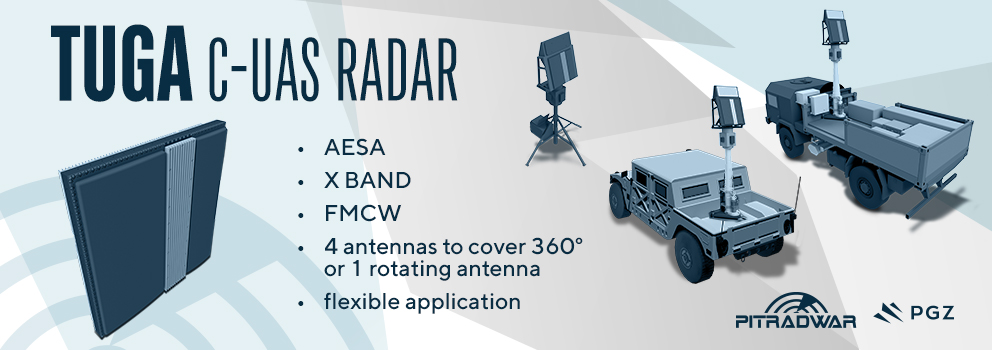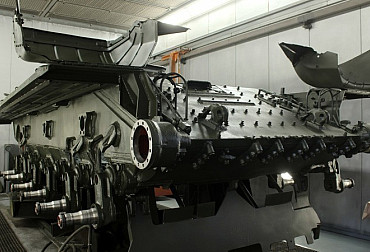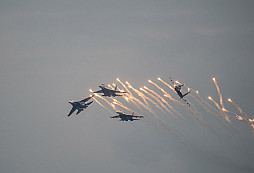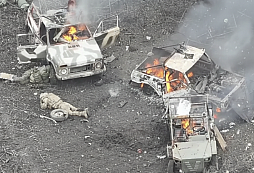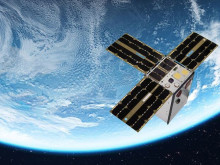China’s path to the stars: Beijing aims for space dominance as a strategic security domain
China is transforming from a rapidly growing terrestrial power into a major player in space – not only in science, but also in military affairs. Ambitious programs, reorganization of military structures, and the development of satellite and anti-space capabilities are challenging the current dominance of the US and opening a new chapter in the power struggle in space. At stake is not only technological prestige, but also the security architecture of the future universe, as discussed in the following article by Jan Železný, director of the Center for Asia-Pacific Studies (CAPS) at CEVRO University.
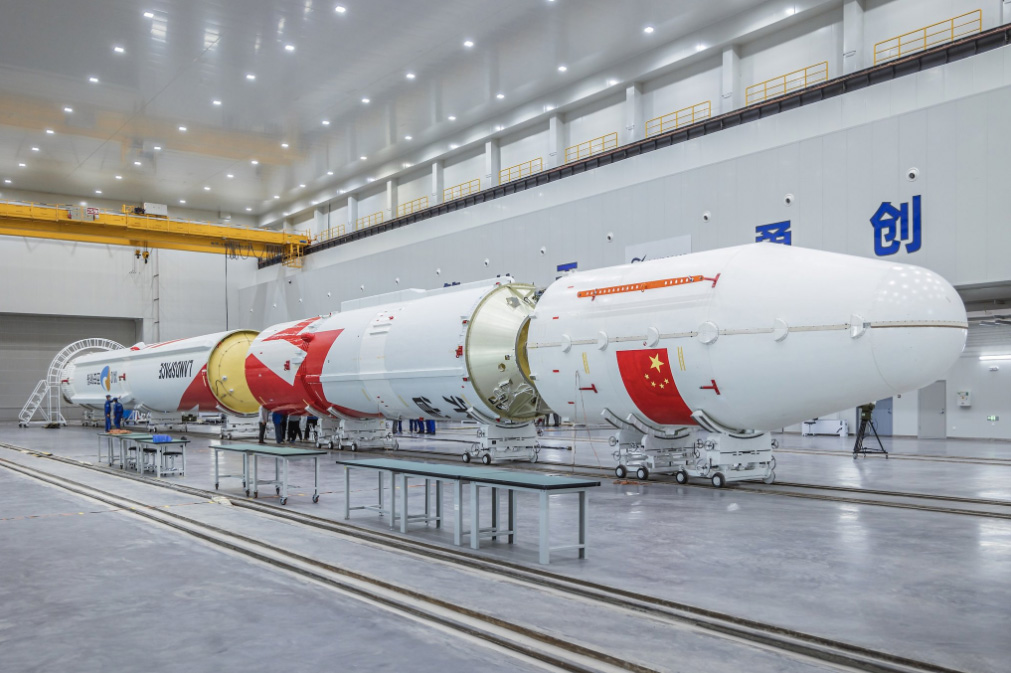
The People's Republic of China (China) has experienced significant economic, technological, and, as a result, power growth over the past four decades. This has manifested itself not only in the expansion of what has been a predominantly terrestrial power (tellurocracy) into nearby and distant seas, but also, in recent years, into space. This projection of power beyond planet Earth is characterized not only by its scientific and civilian nature, but also by significant military activity. It appears that China, like many other terrestrial powers, increasingly views space as a new military domain, the security of which is key to maintaining national security and sovereignty. However, this conflicts with the dominant position of the United States (US), which is causing considerable tension. So how is the rivalry between these two most powerful countries playing out in the military sphere of space? Who has the upper hand, and what implications do China's activities in this area have for the world?
American concerns about space dominance
"The gap in our capabilities has narrowed significantly, and we need to change the way we look at space. Otherwise, this gap could reverse and no longer be to our advantage." This was how General Michael Guetlein, Vice Chief of Space Operations, commented on the rapid development of China's capabilities to operate in space during his speech at the 16th annual McAleese Defense Programs Conference in Arlington, Virginia. He was referring to the fact that China's progress in space requires a fundamental change in his country's thinking about the “middle kingdom,” but also about space and its security dimension. Otherwise, the US will lose its dominant position.
Guetlein was not alone in this view; the topic has been resonating in US military circles for some time. For example, General Stephen Whiting, commander of the United States Space Command, openly warned during his speech at the 39th Space Symposium in Colorado Springs in 2024 that China is advancing in the development of its space capabilities with “breathtaking speed.” Space Symposium in Colorado Springs in 2024, openly warned that China was advancing its space capabilities at a “breathtaking pace,” “rapidly developing a range of anti-space weapons to threaten our space capabilities.” As an example, he cited a threefold increase in surveillance and intelligence satellites in Earth orbit over the past six years. According to him, Beijing is thus focusing on the long-term goal of challenging US supremacy in the so-called final frontier, a sphere that Washington has dominated since its victory in the space race with the Soviet Union (USSR). Similarly, in 2022, the then chief of staff of the US Space Force (U.S. Space Force), General Nina Armagno, during her visit to Australia, warned that the rapid development of Chinese space technologies, especially their ability to scale quickly, poses a threat to US dominance in space. Moreover, China's strategy appears to be extremely successful, as the country has been able to build a “kill web” in the Pacific Ocean in recent years, which is capable of locating, tracking, and, if necessary, targeting enemy units. The term refers to the ability to integrate intelligence and combat capabilities across various domains, including land, sea, air, space, and cyberspace.
The rise of Chinese ambition – from the shock of the Persian Gulf to the desire for dominance
The Chinese military space program is not a new phenomenon; on the contrary, it has a long history dating back to the 1960s. However, the turning point that forced Beijing to not only extensively modernize its space capabilities, but above all to expand them in the military sphere, was the first Gulf War in the early 1990s and Operation Desert Storm. Paradoxically, this moment of US power at its peak triggered a general arms race in China, as its military leaders were impressed by the technological capabilities of the US forces and their subsequent superiority over an enemy equipped with Soviet technology. The subsequent extensive transformation also included the development of space forces, which evolved within various units.
A fundamental reform took place in 2015, when the Strategic Support Force (SSF) was created within the People's Liberation Army, combining units dedicated to cyber warfare, electronic intelligence, psychological operations, as well as space operations, including space rocket launches, telemetry, satellite and spacecraft operation, military communications management, and anti-space combat capabilities. The previously fragmented bases dedicated to space activities were also transferred to the SSF. The importance that China attached to this domain is also evidenced by the fact that the number of members of these forces was estimated at 200,000–250,000 men, which represented approximately 10% of the total personnel of the People's Liberation Army. The unit was thus larger than most NATO armies and close to the strength of the Japan Self-Defense Force.
However, for reasons unknown, another reform took place in 2024, breaking this large unit into three smaller independent units, fully subordinate to the Central Military Commission (CMC) – the highest political and military body in the country. Newly created were the Cyber Forces, Information Support Forces, and, most importantly, the Aerospace Force (ASF). These were to take over responsibility for the space dimension of the People's Liberation Army's activities and carry out a wide range of tasks, from spaceport management to the training of Chinese astronauts (known as taikonauts). In the case of the US, this is equivalent to the Space Force and NASA (National Aeronautics and Space Administration).
China defends itself against criticism
This move has raised concerns among other space actors, led by the US. However, Beijing has rejected the criticism from the outset, stating in official statements that it is following the strategy set out in the UN Outer Space Treaty, in which it expressed its interest in continuing the peaceful use of space for the benefit of all humanity. For example, in connection with the announced reorganization of the SSF and the creation of a separate military ASF, the Chinese Ministry of National Defense, through its spokesman Wu Qian, said that space remains “the shared property of mankind,” and that China is ready to cooperate with all countries that also aim to deepen cooperation and contribute to lasting peace and shared security in space. At the same time, however, it added that building these space capabilities significantly strengthens China's ability to “safely enter, exit, and utilize space.”
The Chinese ASFs are thus apparently intended to serve as a tool for fulfilling the ambitions outlined in the white paper entitled “China's Space Program: A Vision for 2021.” This mentions the simultaneous need to significantly strengthen China's presence in space in the spirit of its peaceful use, with the necessity of ensuring its own security and creating conditions for the fulfillment of its own national interests. To a certain extent, Beijing sees itself as the future guardian of the emerging space order, with the ASF, as a body providing support for military and civilian activities, set to become a dual-purpose organization—that is, a body that will fulfill the objectives of the UN Space Treaty while also ensuring China's national security needs.
Focus on satellites
The satellite sector appears particularly worrying from the US perspective, with both countries recording a sharp increase in activity. According to data from the AEI Space Data Navigator database, China had 217 military satellites at the end of 2024, 68% of which were operated directly by the Chinese People's Liberation Army. A full 137 of these were deployed in low Earth orbit (LEO) and 33 in medium Earth orbit (MEO), which corresponded to their known use – 58% surveillance and 25% navigation. In comparison, the US operated 340 military satellites, the vast majority of which were deployed in LEO (290) and performed surveillance activities (57%), communications (18%) or navigation (7.76%). In raw numbers, the US advantage appears clear. However, Washington is concerned about the broader strategy of military-civil fusion (MCF), which is interpreted as China's attempt to strengthen its position as an economic, technological, and military power by blending military and civilian capabilities. In this context, US military leaders interpret this as China's ability to use satellites originally designated as civilian or scientific in the event of a conflict. The US is said to lack this capability, with up to 94% of US satellites classified as purely commercial.
It should be noted that, according to reports from US military sources, China has made significant progress in the development of various types of anti-satellite weapons (ASAT), i.e., weapons designed to destroy or at least disable other (enemy) satellites. These weapons can be kinetic or non-kinetic. For example, in January 2022, the SJ-21 (Shijian-21) satellite attracted attention when it deviated from its traditional position and approached a defunct satellite of the Chinese navigation system BeiDou (equivalent to the US GPS) and used a robotic arm to knock it out of its normal geosynchronous orbit. Under normal circumstances, such a maneuver would have damaged the “attacked” satellite. Even more significant was an incident in 2007, when China destroyed the Fengyun-1C meteorological satellite with an ASAT launched from Earth, creating a cloud of space debris that is considered dangerous for operations in Earth's orbit. China thus joined the US and Russia, which are also developing similar systems.
Beijing is expected to achieve similar success in the field of hypersonic weapons, which operate at the intersection of what is perceived as the air force and space forces. In this area, even the US Department of the Air Force’s China Aerospace Studies Institute acknowledges that Chinese technology and its application in combat conditions are significantly ahead. While the US is still testing these weapons, China has already created four combat-ready brigades equipped with them. This is a continuation of the significant modernization of the People's Liberation Army, which aims to master the most advanced aspects of warfare.
Space as a new security domain
Examples of the expansion of military activities by China, but also by other terrestrial powers such as the US and Russia beyond the Kármán line (the boundary between the Earth's atmosphere and outer space – 100 km above the Earth's surface) clearly show that space is becoming much more than a common heritage of humanity (as assumed by the UN Outer Space Treaty) and is instead a mirror of the ongoing power struggle on Earth. As former NASA chief, senator, and astronaut Bill Nelson has noted many times, the US and China are in a new phase of the space race! This situation carries with it a number of fundamental security threats that no actor in the international system, including the Czech Republic, can afford to ignore. However, the situation should not be viewed solely with pessimism. China's rise to power in space naturally raises concerns among other actors, led by the still dominant US. However, it remains a cynical historical truth that the previous period of space competition between the US and the USSR brought about tremendous technological development, from which civil society continues to benefit today. Space development reached its zenith at that time, and it was, on the contrary, the period of Kissinger's détente that brought stagnation. From a technological point of view, we may therefore be facing one of the most fascinating periods in human history.
